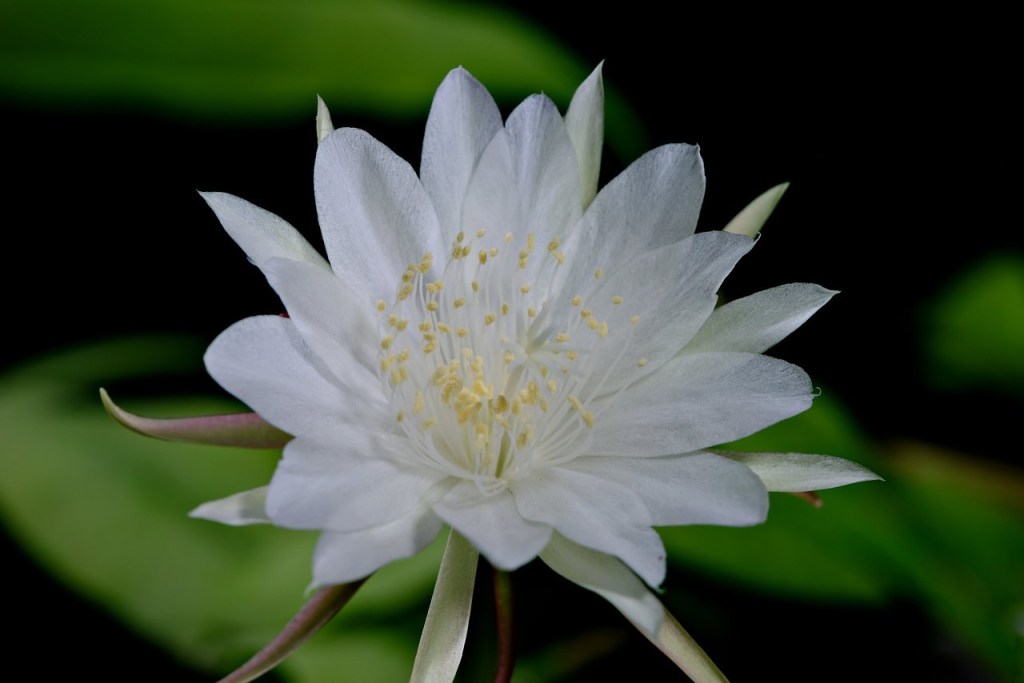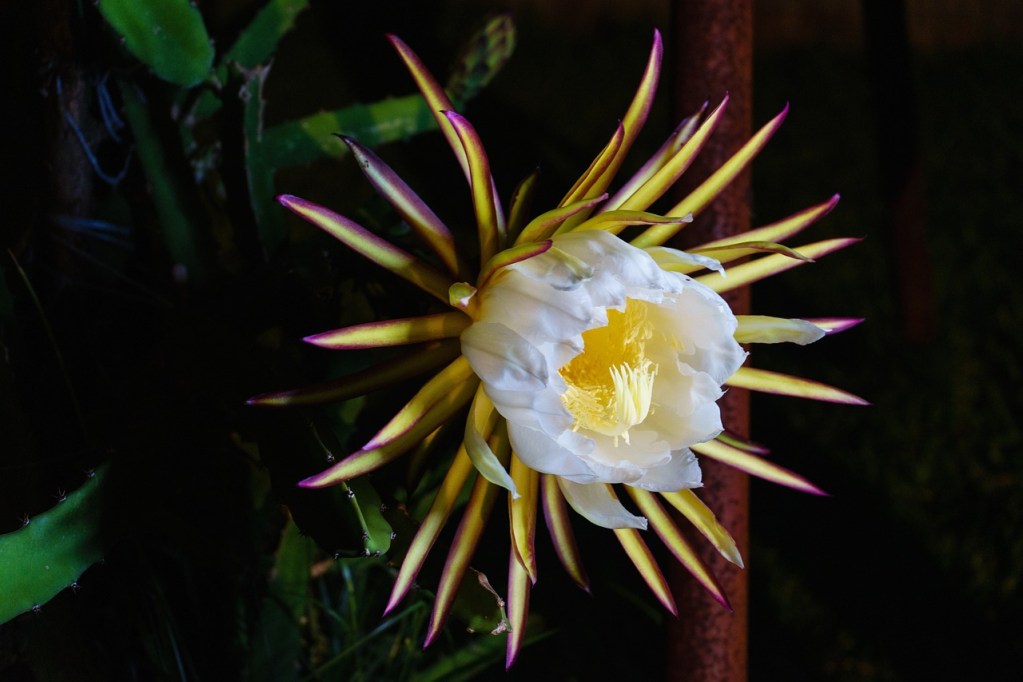There are tons of flowering cacti you can plant in a rock garden for brilliant flowers during the day, but what if you want to enjoy your garden at night? For that, you’ll need to plant a night-blooming cereus. If you haven’t heard of this remarkable cactus, you’re in for a treat! Here’s everything you need to know about planting and caring for it.

What is a night-blooming cereus?
Night-blooming cereus is the common name for a group of cacti that bloom at night. Although many of the cacti are from the genus Cereus or a closely related genus (such as Hylocereus or Peniocereus), some are from a more distantly related genus, such as Epiphyllum or Harrisa.
No matter what genus each night-blooming cereus is from, there are a few consistent things. In addition to being cacti that bloom at night, night-blooming cereus have pale flowers. This makes them more visible in the dark, which is essential for them to pollinate. The main pollinators of night-blooming cereus cacti are moths and bats. Additionally, the flowers tend to be large with a strong smell, so the pollinators can find them more easily.
The reason these flowers need to be extremely easy for pollinators to find is that they are incredibly short-lived plants. Some species bloom for only one night, while others might bloom for a week with individual flowers lasting only one or two nights.

Planting cereus
Here's how to plant your night-blooming cereus:
Step 1: Choose a fitting variety.
Two popular ones are Queen of the Night (Epiphyllum oxypetalum) and Dragon Fruit (Selenicereus undatus or Hylocereus undatus).
Step 2: Plant your cactus where it will get morning sun and afternoon shade, or bright, indirect light indoors.
Step 3: Plant it in sandy, well-draining soil, or use cactus-specific potting soil for indoor plants.
Step 4: Choose a location with plenty of room.
Night-blooming cereus cacti can grow quite large: between 10 and 20 feet tall! Make sure to plant it away from structures and other plants.

Caring for a night-blooming cereus
Here's how to care for your cactus:
Step 1: Water your night-blooming cereus only when the soil is completely dry.
Watering a cactus can be tricky, but these plants do resist droughts. Cacti will recover from underwatering much more quickly than they will overwatering.
Step 2: Keep your cactus warm in the winter.
If you’re growing it indoors, be sure to keep it away from drafty windows or air vents.
Step 3: Reduce watering during fall and winter.
Step 4: Watch closely for flowers in early to midsummer, typically around June.
Depending on the exact type of night-blooming cereus you have, you may not see flowers until the cactus is a few years old.
Enjoying these rarely seen blooms on a warm summer night, perhaps with friends around a fire pit, might sound like a perfect night to you. If it does, these tips will help you get started growing a night-blooming cereus right away. They are short-lived flowers but well worth the wait!




